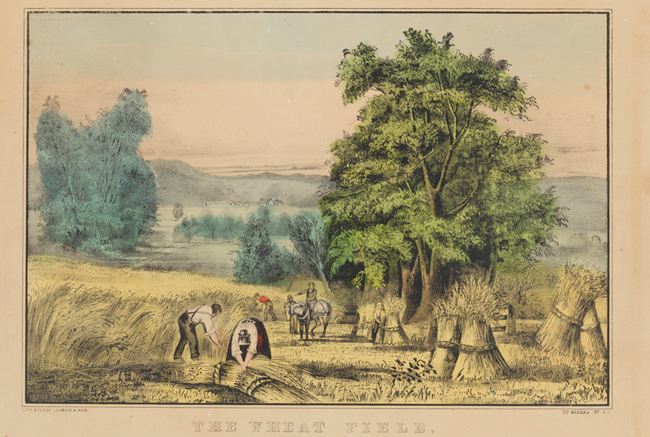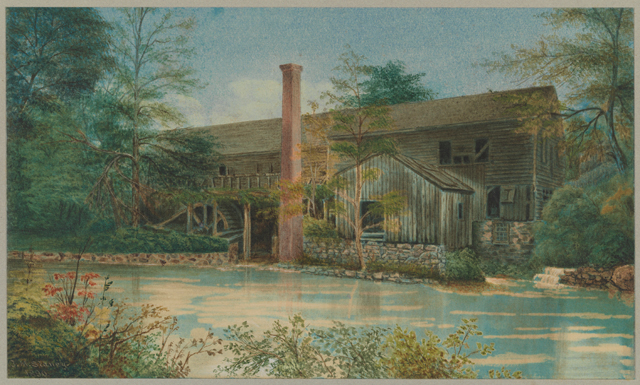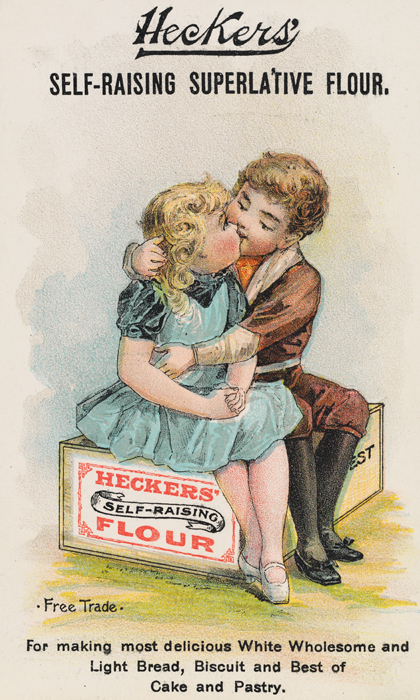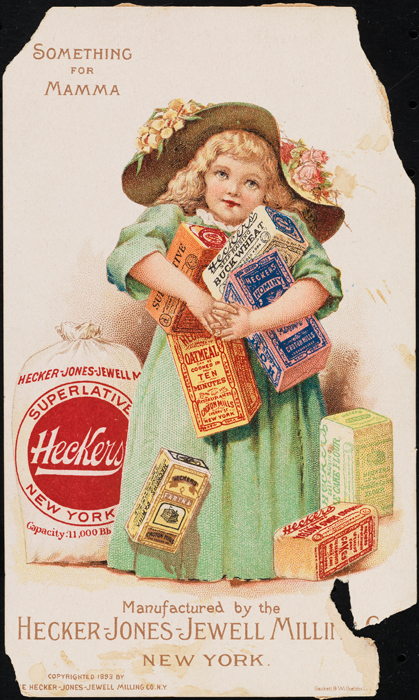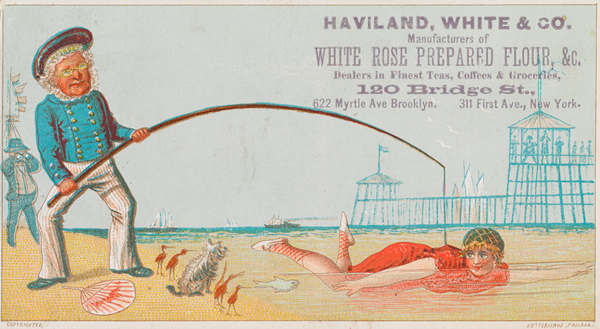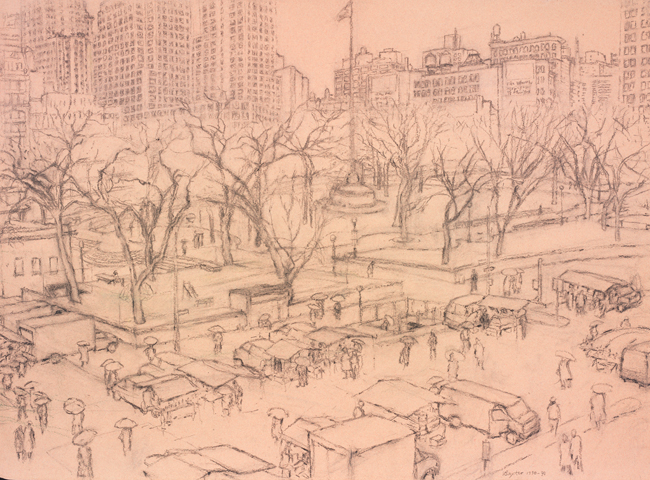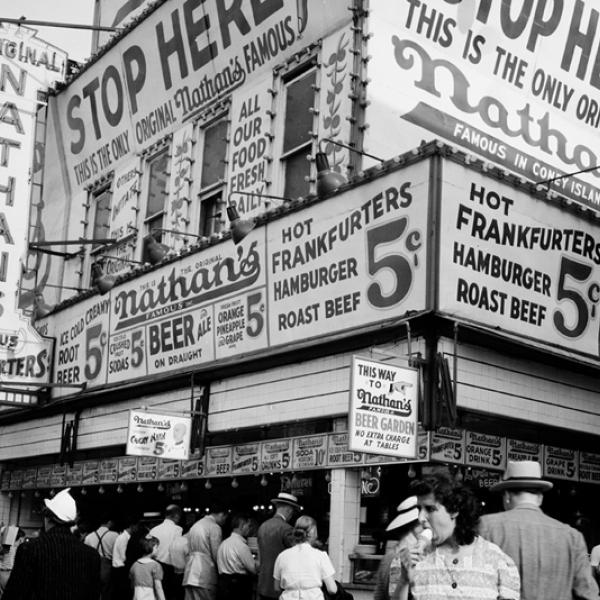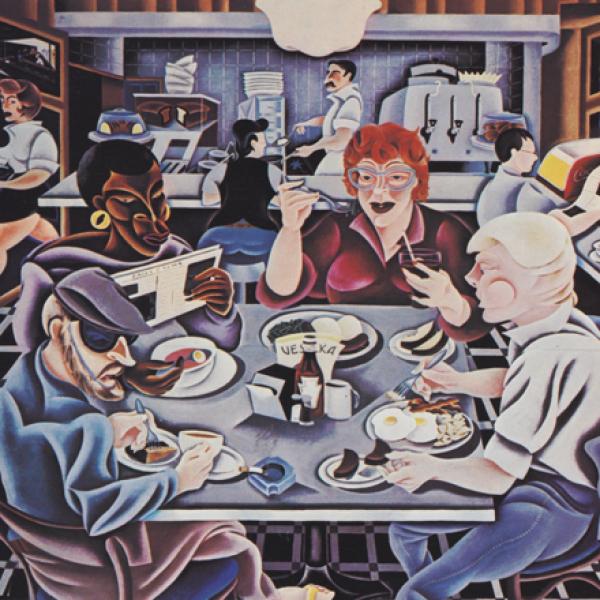New York: The Original Breadbasket of America
Tuesday, April 17, 2018 by
Bread is commonly referred to as “the staff of life.” The cultivation of wheat, followed by the fermentation of flour, was an essential step in human evolution, but as we begin to reevaluate our relationships with food, we can tend to associate our food system with meats or salad vegetables overlooking wheat entirely.
We think of flour as a forgettable, white, powdery nothing that lives in a paper bag and only comes out to stick the butter to our cookies and hug our sandwiches. If we are concerned about where our hamburger comes from, or our tomato slice, why don’t we consider the bun as well?
As we evaluate how issues such as organic farming, GMO policies, and food miles shape our food system, it is exciting to consider that wheat and flour, particularly in the New York region, are currently in a stage of revitalization.
Wheat had a prominent place in the life of early New York. The Northeast was a breadbasket of colonial America making wheat a highly profitable commodity crop for many notable New Yorkers, including Philip Schuyler (father-in-law of another famous New Yorker, Alexander Hamilton). The Schuyler wheat fields played a dramatic role in the mythmaking of New York’s Revolutionary era. In 1777, Major General Schuyler’s wife, Catherine Schuyler, famously traveled to their estate near Saratoga at great risk and set fire to their wheat fields to keep the advancing British army from provisioning their troops off American wheat.
In the 1800s, wheat was still grown around the New York region. Originally processed by small community mills, with production eventually moving towards large-scale commercial facilities. Community milling was a regular part of life before the advent and popularization of the roller mill, which could process wheat to flour at a much higher rate and also stripped the bran from the white flour making it more delicate but less healthy. As production changed, manufacturing moved into the urban centers of New York City.
Heckers is an example of a company that began life as a small regional mill and moved into the bustle of the big city. Starting out in the Hudson Valley, George Hecker was credited with developing the first “self rising” flour, and went on to win awards at the World’s Fairs in London and New York in the 1850s. This prominence led Heckers to establish a new facility in Lower Manhattan in an area now in the shadow of the Manhattan Bridge. The Heckers brand still exists today as a part of the Uhlmann Company milling wheat grown in Kansas.
As the roller mill gained prevalence, millers and manufacturers had to rely on “prepared flour” which incorporated additives to make up for the nutrients and flavor lost by abandoning the older stone milling processes.
New York’s wheat took a series of hits in the late 1800s as agricultural disasters such as the Hessian fly and the wheat midge hit crops across the region. Flour production began to move steadily westward towards the prairies of Kansas and North Dakota with larger conglomerates running both farming and milling. A myth was born that good wheat could not thrive in the Northeast, and along with frozen dinners and fast food, 20th century Americans learned to love Wonder Bread.
As we understand more about how our individual choices affect the food system, wheat and flour are being given more consideration. We are learning that local food provides different flavors and higher nutrients with less negative environmental impact than commodity crops. Wheat is no exception.
New York City’s Greenmarket began investigating methods to bring local grains to the forefront in 2004 and by 2009 required all bakers selling at their markets to use a minimum of 15% local flour, defined as product grown and milled in the New York region.
The Greenmarket’s Regional Grains Project has revitalized the landscape of New York grain, reintroducing multiple heritage wheats that had disappeared from the Northeast. In 2017 alone, the project moved 23 tons of local wheat and beans to New Yorkers.
The Museum of the City of New York’s own café, Chalsty's Café Featuring Amy's Bread, is part of the movement using local grains. Amy’s Bread sources whole-wheat flour from North Country Farms in upstate New York for their Whole-Wheat Challah, Tangy Sourdough, and Black Olive breads, among others. Stop by for a treat during your next visit!

